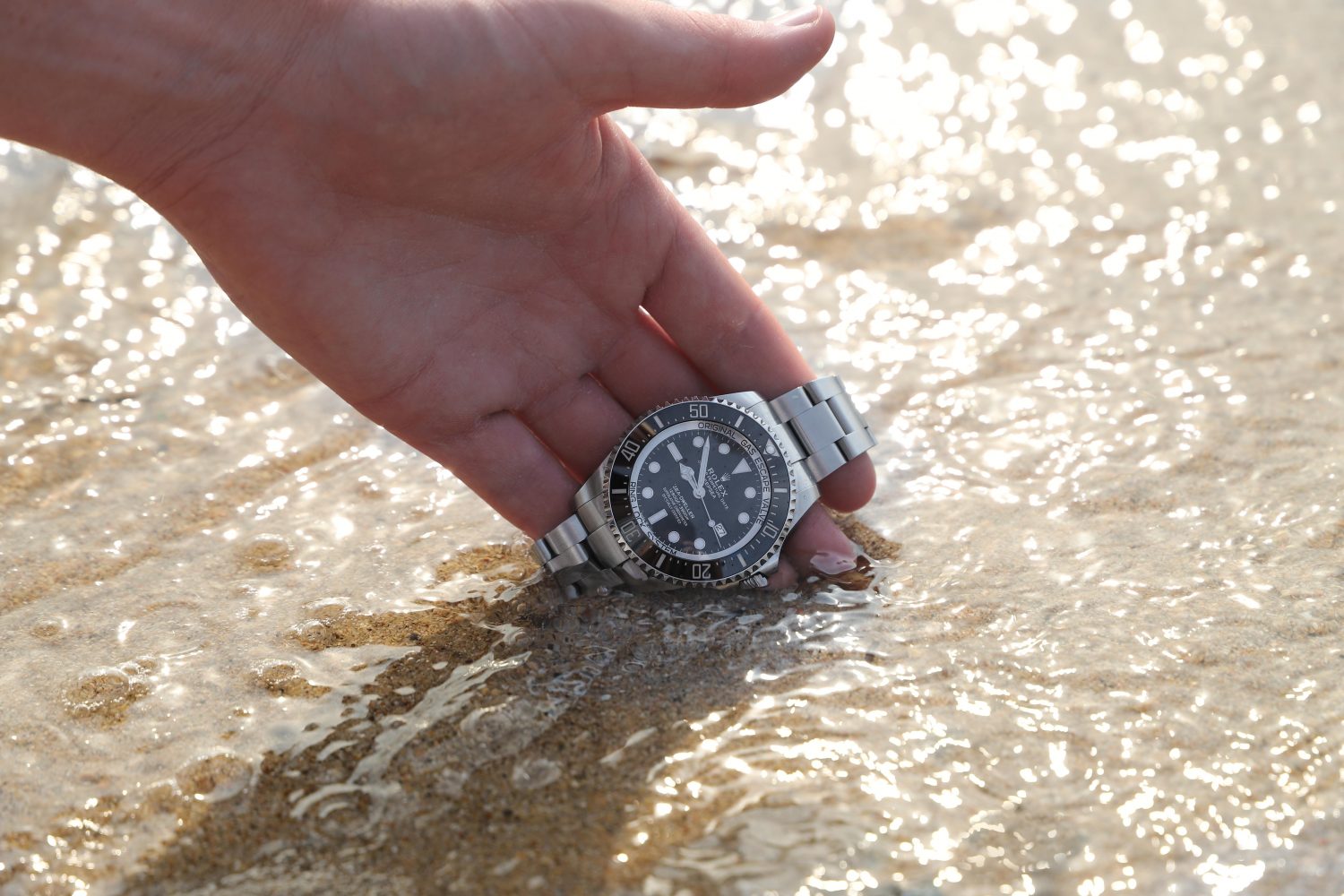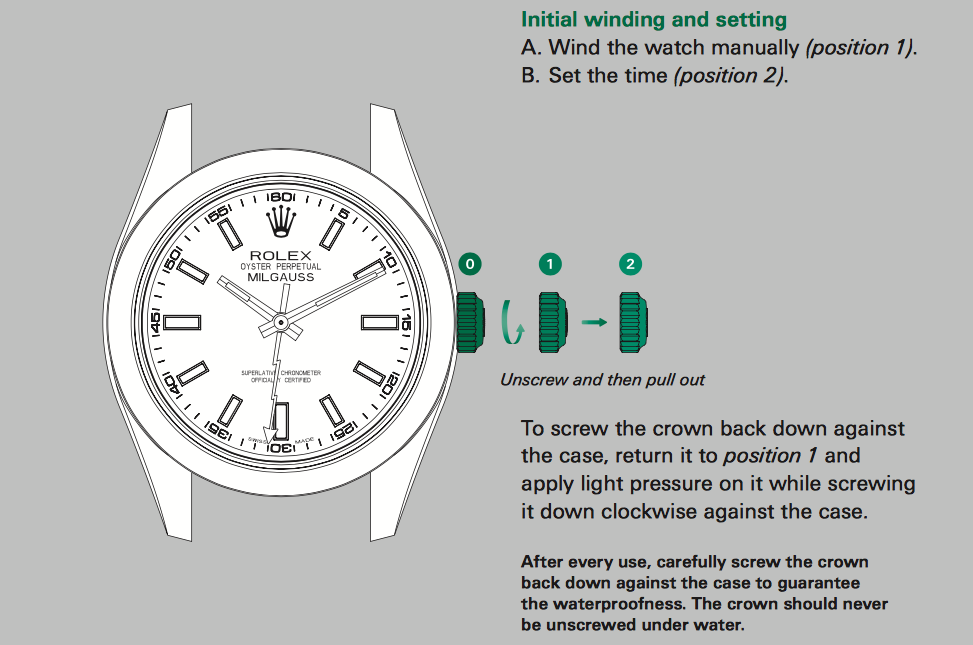
Can Rolex go in Salt Water?
If you have bought a Rolex, you may be wondering how you should maintain and handle it to ensure its proper functioning. The last thing you want after you have invested thousands of dollars into your beautiful luxury watch is to have it damaged by improper use.
This may spark the question of whether or not a Rolex can go in Saltwater.
It’s no news that Rolex watches are water-resistant. Rolex heavily promotes the great water-resistant properties of the Oyster case and is proud of the resistance against water that they offer. But what about salt water?
Rolex says the following:
“Water is the natural element for a Rolex with a metal bracelet, including the salt-water of the sea and ocean. All Rolex wristwatches are waterproof to depths of at least 100 metres for Oyster Perpetual models, and 50 metres for Cellini models. All you have to do after diving or a day at the beach is simply to rinse your watch with fresh water to remove any salt and sand deposits: wearing your watch while showering at the end of the day should do the trick.”
So in Rolex’s own words, you can absolutely wear your watches in saltwater!
Rolex’s Oyster case is built to last and to protect it from water – including salt water. The construction of the case makes it “completely dustproof and waterproof”.
Rolex is a company that puts great emphasis on functionality and performance. Whilst they make luxury watches, Rolex combines this with technical expertise. In Rolex’s marketing, the company heavily highlights professional use. Rolex watches are not like most others. Whilst most are delicate and should be handled with care, Rolexes are built to last a lifetime and withstand harsh conditions and environments.

Precautions before swimming or diving with your Rolex
If you plan to go swimming with your watch, whether it be in saltwater in the ocean, or in a chlorinated pool, you first need to ensure that the crown is properly sealed. To ensure this, you need to screw the screw-down crown properly to create a hermetic seal like the hatch of a submarine. Any time your watch will be in contact with water, always check before that you have sealed the crown until it can’t turn any further.
Rolex created the first water-resistant watch in 1926 by inventing the “Oyster case”. Today, all of Rolex’s watches are water-resistant to a depth of 100m/330 feet, with the exception of the Cellini. The watches are built with the patented Oyster system which is a hermetic case. It’s constructed in a way that the bezel, case back, and winding crown are screwed against the middle of the case, ensuring that all parts of the watch are securely fitted to create a truly water-resistant case.
When Rolex tests its watches, they subject them to water pressure that is 10 percent greater than the depth it has guaranteed, and for dive watches, 25 percent more. This means that a Rolex watch will, in practice, be able to withstand far greater depths than what is specified.
904L steel
In 1985, Rolex introduced the first watch using 904L stainless steel. Prior to this, Rolex used 316L steel – like most watch brands do today. But over time, Rolex identified that the 316L would in some cases develop certain levels of rust or pitting. This is particularly true for watches that are subject to corrosive liquids that speed up the corrosion process. This of course also includes saltwater. Whilst 316L stainless steel offers great resistance against corrosion, it is not corrosion-proof.
Rolex, therefore, moved to 904L steel for all of its watches as it offers greater anti-corrosive properties than 316L. This provides greater resistance against rusting and pitting – even if you frequently wear your watch when swimming in saltwater.

Proper care after using your Rolex in Saltwater
Rolex’s watches are built to be more or less set or forget watches. But it’s still advised to take some level of care of your watch after you have swam in saltwater.
After you have swum in salt water or other corrosive chemicals, it’s advised that you clean it properly with water afterward. This is particularly true for saltwater. When saltwater dries, it will leave salt crystals on the watch. This will especially be noticed if you have a rotating bezel. If you swim in salt water and then let the water dry, the salt crystals will likely make it very difficult to rotate the bezel.
Not only will cleaning your watch remove corrosive substances, but it will also retain the watch’s luster.
If you’re a frequent swimmer, it is advised that you occasionally pressure-test your watch to ensure that it is properly water-proof. Over time, the gaskets may deteriorate and can compromise the watch’s water resistance. If you frequently take your watch from hot and cold environments (for example bubble pool or sauna), it will speed up the determination process.
Therefore, it can be good to have your watch checked once a year and see if it needs a pressure service where the waterproof is tested, and if needed, the gaskets are replaced. In general, you don’t need to do this every year, but it can be good if you want some peace of mind and be on the safe side to avoid any expensive mistakes.




